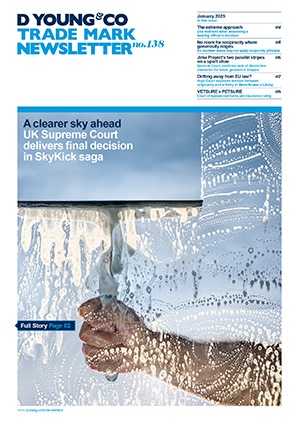Genuine use of a collective mark: Der Gruene Punkt
The Court of Justice (CJEU) recently strengthened the position of owners of collective marks in the EU, in particular by taking into account the specific consumer perception when assessing genuine use of such collective marks.
Der Grüne Punkt — Duales System Deutschland GmbH (Der Grüne Punkt) owned an EU collective trade mark registration (since 1999) for two interlaced arrows in a circle for goods in all 34 classes and several services in classes 39, 40 and 42.

This collective mark aims to enable consumers (i) to recognise a product /packaging bearing the sign as being part of a recycling system and (ii) to distinguish them from other packaging/products that are not part of this system. The trade mark owner does not manufacture the products, but merely allows certain authorised third parties to use the collective mark in order to highlight the recyclability of the product packaging under Der Grüne Punkt’s system.
In 2012, a Slovak company filed a revocation motion against the subject collective mark based on lack of genuine use. Der Grüne Punkt argued that the products and their packaging are sold as a unit and, therefore, have to be assessed together. In 2015, the Cancellation Division of the EUIPO partly revoked the collective mark in the first instance for most of the goods – except for various packaging goods. The Board of Appeal confirmed this view arguing that the mark was not perceived as an indication of origin for the goods in question, but only as an indication that the packaging of the goods may be collected and recycled according to that system.
The General Court (GC) found no genuine use for goods other than packaging. According to the GC, consumers clearly distinguish trade marks that indicate the commercial origin of products from those that indicate that packaging waste may be recycled. When seeing the collective mark on a packaging, the consumer would not recognise this as an indication of the origin of the product.
Further, the GC held that the mark was not intended to create or preserve an outlet for the goods at issue, but only for their packaging - even in the unlikely case that a consumer’s final choice on a product might be influenced on the basis of the quality of the external packaging alone.
The Court of Justice (CJEU) annulled the GC’s decision, assuming genuine use of the EU collective trade mark. First, the CJEU emphasised the different functions of individual and collective marks. The court re-iterated that the latter should not be perceived as an indication of origin of a product deriving from a certain company, but rather indicated that a product comes from a company that is a member of a certain association.
When assessing the genuine use of Der Grüne Punkt’s collective mark, this essential function of a collective mark needs to be taken into consideration. In light of this, genuine use should be assumed if a collective mark is used to distinguish the goods or services of members of the association (the association being the proprietor of the mark) from those of other companies, in order to create or preserve an outlet for those goods or services.
Therefore, the GC should also have considered the nature of the goods involved as well as the characteristics of the relevant markets. By making such a more precise assessment, the GC should have evaluated if the use of the collective mark was able to create an outlet for each different commercial sector involved.
The CJEU emphasised that some of the products in question concerned cover everyday consumer goods (such as food, beverages, personal care and housekeeping products) that generate daily packaging waste, which consumers must dispose of. Therefore, it cannot be denied that the use of a collective trade mark, which informs consumers about the recyclability of the product packaging, may influence consumers’ purchasing decisions – as the consumer might prefer one product over another just because its packaging is easily recyclable. As a result, the use of the collective mark would be able to contribute to maintaining or creating market shares also for the products themselves and not just for the packaging.
Case details at a glance
Jurisdiction:
European Union
Decision
level: CJEU
Parties:
Der Grüne Punkt - Duales System Deutschland GmbH v EUIPO (third party Halston
Properties)
Date:
12 December 2019
Citation:
C-143/19

